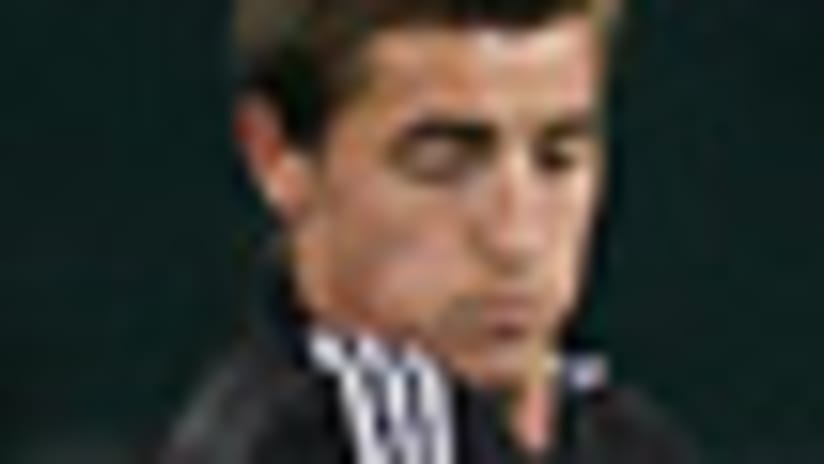D.C. United head coach Tom Soehn isn't one to chat freely about tactics and personnel with the media before games. Loath to risk giving opponents even the slightest opportunity to improve their preparations, he keeps his cards close to the vest and has occasionally deflected lineup questions by joking that he'll use his goalkeepers as strikers.
But in recent weeks, the second-year boss' tactical tinkering has made it that much harder for United's adversaries to pin down a plan of attack against the Black-and-Red, with a wide range of players arranged in three different formations over the past three matches alone.
To hear Soehn tell it, the experimentation will continue until he sees his team at its best.
"We are going to continue to try things until we feel we have a comfort level that puts guys in spots that we feel they're best suited for," he said after practice on Tuesday. "I think the idea of how you play stays the same and throughout a course of a game the formation changes every 10 minutes, every five minutes, so basically it's just to have the understanding."
Relying on a relatively straightforward 4-4-2 shape for the past year, D.C. has lately pushed into an aggressive 3-4-3 when chasing goals and last Saturday's 4-1 win against Real Salt Lake saw the capital club prosper in the 3-5-2 configuration favored by former head coach Peter Nowak.
Last year's early-season skid prompted United to reconsider their shape, adding an extra defender after allowing eight goals in a four-game winless streak. A similar situation unfolded this time around -- Soehn called it "déjà vu" -- but now an extra midfielder is being mooted as the solution, not the problem.
"By having three central midfielders like that, it gives us a lot more freedom to move and play and interchange, and also have that one guy sitting in the hole in case we do get countered," said right back Bryan Namoff. "Because in the early couple of games we've seen some counterattacks and [been] on the end of some goals because of it. ... So it gives us a little bit better of a defensive shape, and if they do come at us then we'll be compact with the three in the back."
Two meetings with Real in a two-week span provided an intriguing contrast of Soehn's experiments. In Utah, using the high-pressure 3-4-3 that had created so many chances against Mexican side Pachuca in a CONCACAF Champions' Cup match just a few days before -- albeit with several reserves spelling starters -- D.C. found themselves stretched and exposed repeatedly in a 4-0 defeat. But the 3-5-2 used at RFK last weekend helped win the midfield battle and ensure a greater share of possession.
"Last time we played them, we pressed the entire game and they were just basically playing kickball and bypassing our whole midfield, and with the big guy [Kenny Deuchar] up top, he's a handful," said defensive midfielder Clyde Simms on Saturday. "So we tried to make them come out and play and then counterattack them a little bit, then get a goal and get a hold of the game."
Simms has been working to build a rapport with playmaker Marcelo Gallardo in the midfield engine room, but against RSL both benefited from the presence of an extra ball winner as first Dan Stratford, then Rod Dyachenko, worked to cover ground and protect the back line.
"I think we were better defensively," said Simms. "In the 4-4-2 we had too many holes in the midfield and I think we really took care of it with the five midfielders tonight."
The 3-5-2 shape also allows Gallardo to push higher into the attack, and coaxes United's wingers towards the touchlines to provide more width. All this tweaking might not be possible, however, without the versatility of Namoff and Gonzalo Martinez in the back. The athletic Martinez has looked comfortable both centrally and on the left side of a three-man defense, while Namoff's seven years in D.C. have given him experience in an assortment of positions.
"I think it's going to be a situational change," said Namoff of his squad's tactical flexibility. "If we're going to be on the road or if it's something where we want to try to sit in, maybe we go back to a 4-4-2. But who knows? The nice thing is, we can interchange formations and if we can do that, we can do that very smoothly."
Charles Boehm is a contributor to MLSnet.com. This story was not subject to the approval of Major League Soccer or its clubs.










